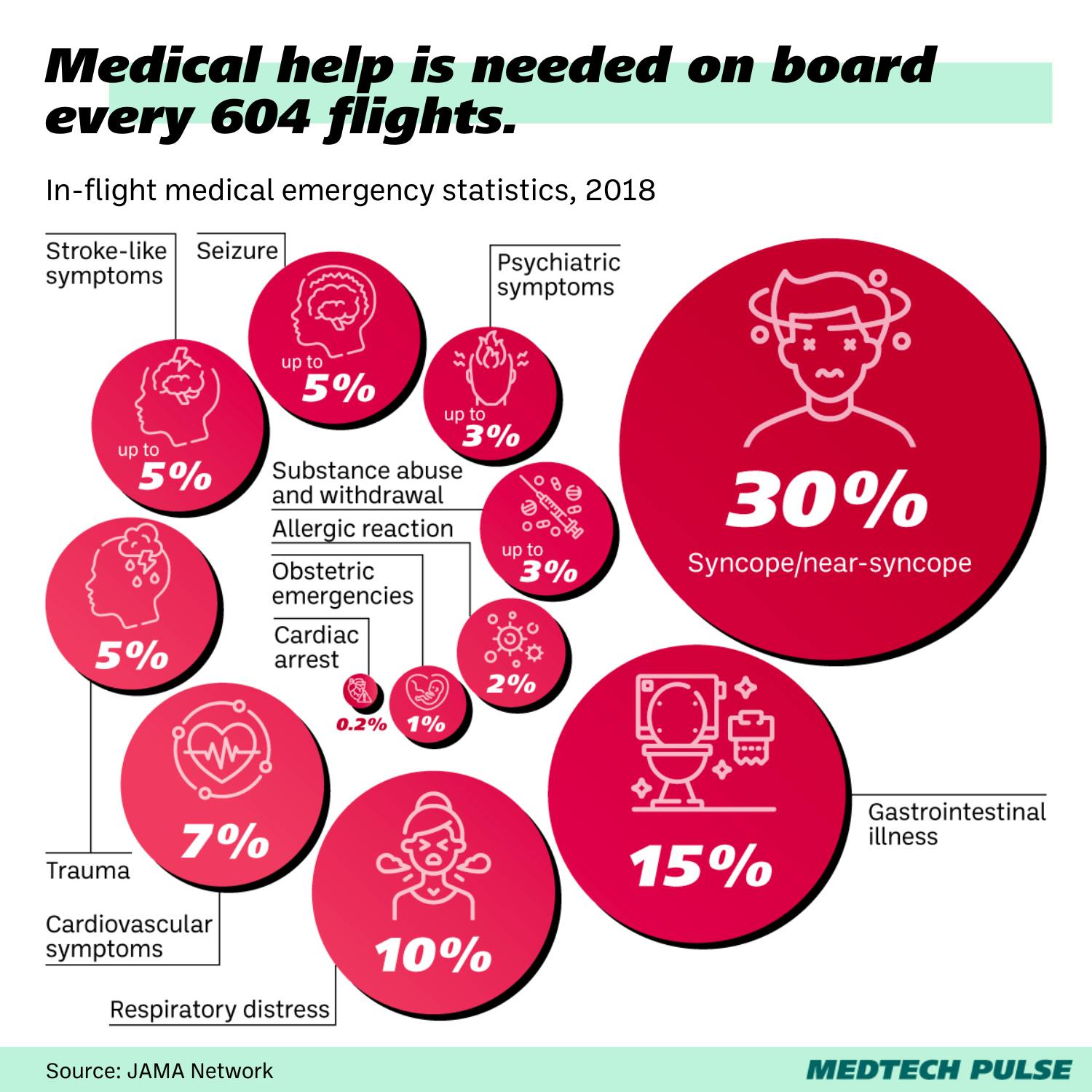Emirates unveils mile-high telemedicine
“Is there a doctor on board?”
It’s something no flight passenger ever wants to hear. Both because of the worry for a fellow passenger’s health and because if someone is experiencing a medical emergency, there’s a chance of an emergency landing.
But with medical technology, the direness of in-flight medical emergencies is decreasing.
Airlines’ latest investment: The airline Emirates is partnering with French telehealth company Parsys Telemedicine to offer inflight virtual medical services onboard its commercial aircraft.
- This care will be delivered via the Parsys Telemedicine Kit for Emirates, which connects to ground medical crews offering 24/7 medical support from Emirates’ headquarters in Dubai.
- The airline has invested over $2.4 million in co-designing these kits, which include video call capabilities, secure health data sharing, a blood pressure monitor, a pulse oximeter, a glucometer, and a 12-lead electrocardiogram (ECG).
Healthcare in the air: In-flight medical emergencies are a serious concern for both passengers and airlines alike.
- While medical emergencies are an infrequent occurrence on flights, the risk of liability and extensive carrier delays are both risks airlines are incentivized to try to mitigate.
- This announcement from Emirates comes as more attention has been paid in recent years to the contents of airlines’ required emergency medical kits, such as the advocacy around including epinephrine auto-injectors (otherwise known as EpiPens) in these kits.

A new arena for wellness: Over the past few years, air travel has become a new hub for health focus and innovation.
- It might be tempting to relate this growing trend to the start of the COVID-19 pandemic, when airlines were emphasizing transmission safety precautions, including masking and ventilation upgrades.
- However, look around a modern airport and you’ll find many markers of wellness: from in-terminal spa experiences to the growing trend of autism- and anxiety-focused sensory rooms being built at major US airports, most recently at Newark International Airport.
- Airlines are also capitalizing on this trend to distinguish themselves from the increasingly competitive air travel market, going above and beyond with their health-focused offerings.
- More recently, we’ve seen this with Delta’s own medical emergency management partnership with MedaAire’s MedLink as well as with Air New Zealand’s work with virtual reality therapy company oVRcome to offer exposure therapy to customers with aerophobia, or the fear of flying.